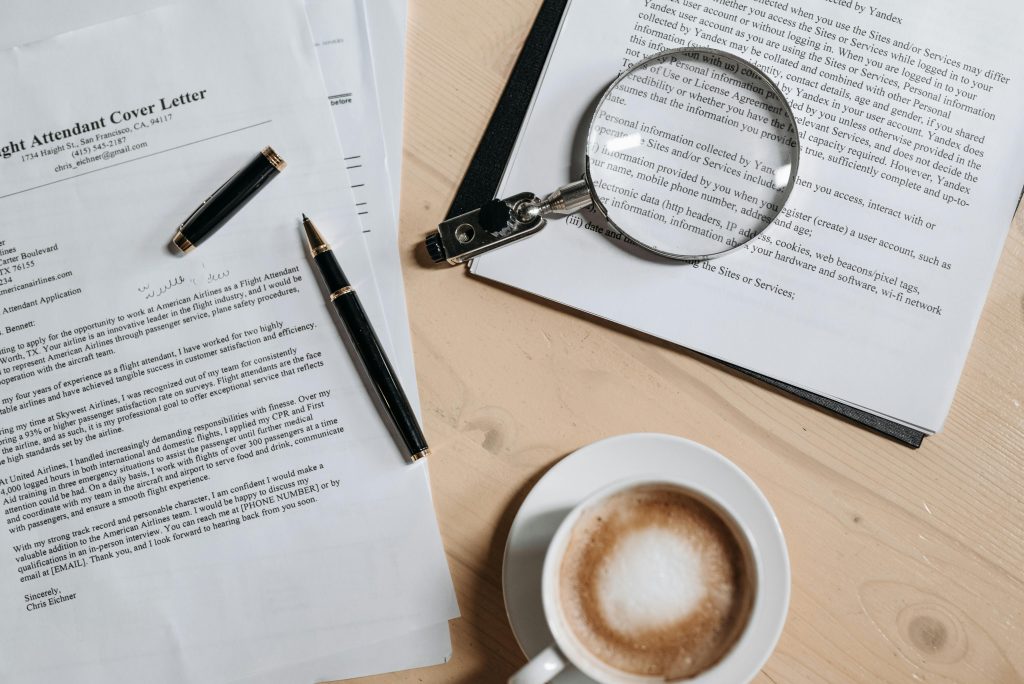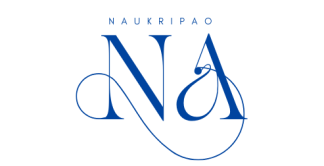
Introduction: Understanding the Importance of a Cover Letter
In today’s competitive job market, a well-crafted cover letter can be the key to unlocking new career opportunities. A cover letter is your chance to make a strong first impression on potential employers, showcasing your skills, experiences, and enthusiasm for the position you’re applying for. But what exactly is a cover letter, and how can you write one that truly stands out? In this comprehensive guide, we’ll explore everything you need to know about crafting an impressive cover letter that will help you land your dream job.
What is a Cover Letter?
Before we dive into the specifics of how to write a cover letter, let’s first understand what it is and why it’s so important. A cover letter is a document that accompanies your resume when you apply for a job. It serves as an introduction to potential employers, explaining why you’re interested in the position and why you’re the best candidate for the role.
The Purpose of a Cover Letter
The primary purpose of a cover letter is to:
- Introduce yourself to the hiring manager
- Express your interest in the specific position and company
- Highlight your relevant skills and experiences
- Demonstrate your understanding of the company’s needs
- Explain why you’re the ideal candidate for the job
What is a Cover Letter with Resume?
When you submit a job application, you typically include both your resume and a cover letter. While your resume provides a concise overview of your work history, education, and skills, the cover letter allows you to expand on these points and make a more personal connection with the employer.
A cover letter with resume package gives you the opportunity to:
- Expand on key points from your resume
- Provide context for your experiences and achievements
- Showcase your writing skills and ability to communicate effectively
- Demonstrate your enthusiasm for the position and company
The Cover Letter Format: Essential Elements and Structure
Now that we understand what a cover letter is and why it’s important, let’s explore the standard cover letter format. A well-structured cover letter typically includes the following elements:
1. Header
Your header should include:
- Your full name
- Address
- Phone number
- Email address
- Date of writing
2. Salutation
Address the hiring manager or recruiter by name if possible. If you don’t know their name, use a general salutation such as “Dear Hiring Manager” or “Dear [Company Name] Recruitment Team.”
3. Opening Paragraph
In your opening paragraph:
- State the position you’re applying for
- Explain how you learned about the opportunity
- Express your enthusiasm for the role and company
4. Body Paragraphs (1-2)
Use the body paragraphs to:
- Highlight your relevant skills and experiences
- Provide specific examples of your achievements
- Explain how your qualifications align with the job requirements
- Demonstrate your knowledge of the company and industry
5. Closing Paragraph
In your closing paragraph:
- Reiterate your interest in the position
- Thank the reader for their time and consideration
- Express your desire for an interview or further discussion
6. Signature
End your cover letter with a professional sign-off, such as “Sincerely” or “Best regards,” followed by your full name.
How to Write a Cover Letter: Step-by-Step Guide
Now that we’ve covered the basic structure of a cover letter, let’s dive into the specifics of how to write a cover letter that will make you stand out from the competition.
Step 1: Research the Company and Position
Before you start writing, take the time to thoroughly research the company and the specific position you’re applying for. This will help you tailor your cover letter to the employer’s needs and demonstrate your genuine interest in the role.
- Visit the company’s website and social media profiles
- Read recent news articles or press releases about the company
- Review the job description carefully, noting key requirements and responsibilities
Step 2: Start with a Strong Opening
Your opening paragraph should grab the reader’s attention and clearly state your purpose for writing. Consider these tips:
- Mention the specific job title you’re applying for
- Explain how you learned about the opportunity (e.g., job board, company website, referral)
- Express your enthusiasm for the position and company
- If applicable, mention a mutual connection or referral
Example:
“I am writing to express my strong interest in the Marketing Manager position at XYZ Company, as advertised on LinkedIn. As a longtime admirer of your innovative marketing campaigns, I am excited about the opportunity to contribute my skills and experience to your dynamic team.”
Step 3: Highlight Your Relevant Skills and Experiences
In the body of your cover letter, focus on showcasing how your qualifications align with the job requirements. Use specific examples to illustrate your skills and achievements.
- Choose 2-3 key qualifications from the job description
- Provide concrete examples of how you’ve demonstrated these skills in your previous roles
- Use metrics or quantifiable results whenever possible to showcase your impact
Example:
“In my current role as Marketing Coordinator at ABC Company, I have successfully managed social media campaigns that increased engagement by 50% and led to a 25% boost in website traffic. My experience in developing data-driven marketing strategies aligns perfectly with XYZ Company’s focus on measurable results and innovative approaches.”
Step 4: Demonstrate Your Knowledge of the Company
Show that you’ve done your research by mentioning specific aspects of the company that appeal to you. This demonstrates your genuine interest and helps you stand out from other applicants.
- Reference the company’s mission, values, or recent achievements
- Explain how your own goals or experiences align with the company’s vision
- Mention any industry trends or challenges that the company is addressing
Example:
“I am particularly drawn to XYZ Company’s commitment to sustainability and social responsibility. Your recent initiative to reduce packaging waste by 30% resonates with my personal values and professional experience in developing eco-friendly marketing campaigns.”
Step 5: Craft a Compelling Closing
Your closing paragraph should reiterate your interest in the position and express your desire to continue the conversation. Consider these tips:
- Summarize your key qualifications and enthusiasm for the role
- Thank the reader for their time and consideration
- Express your interest in an interview or further discussion
- End with a clear call to action
Example:
“I am excited about the opportunity to bring my marketing expertise and passion for innovation to XYZ Company. Thank you for considering my application. I look forward to the possibility of discussing how my skills and experiences can contribute to your team’s success. Please feel free to contact me at your convenience to arrange an interview.”
Step 6: Proofread and Edit
Before submitting your cover letter, take the time to carefully proofread and edit your work. A polished, error-free cover letter demonstrates your attention to detail and professionalism.
- Read your cover letter out loud to catch any awkward phrasing or grammatical errors
- Use online tools like Grammarly to check for spelling and grammar mistakes
- Ask a trusted friend or colleague to review your cover letter and provide feedback
Common Cover Letter Mistakes to Avoid
As you craft your cover letter, be aware of these common pitfalls that can weaken your application:
- Generic content: Avoid using a one-size-fits-all approach. Tailor each cover letter to the specific job and company.
- Repeating your resume: Your cover letter should complement your resume, not simply restate the same information.
- Focusing on what you want: Instead of emphasizing what you hope to gain from the job, focus on what you can contribute to the company.
- Being too formal or stiff: While maintaining professionalism, let your personality shine through in your writing.
- Excessive length: Keep your cover letter concise and focused, typically no longer than one page.
- Typos and grammatical errors: Carefully proofread your cover letter to ensure it’s free of mistakes.
- Exaggerating or lying: Be honest about your qualifications and experiences. Embellishing the truth can backfire if discovered.
Cover Letter Tips for Different Scenarios
While the basic principles of how to write a cover letter remain the same, you may need to adapt your approach for specific situations. Here are some tips for common scenarios:
Cover Letter for Job Applications with No Experience
If you’re applying for your first job or changing careers, focus on:
- Transferable skills from academic projects, internships, or volunteer work
- Your enthusiasm for learning and growing in the new role
- Any relevant coursework or certifications you’ve completed
Cover Letter for Internal Positions
When applying for a new role within your current company:
- Highlight your knowledge of the company’s culture and operations
- Emphasize your contributions to the organization so far
- Explain how your current role has prepared you for the new position
Cover Letter for Career Change
If you’re transitioning to a new industry or field:
- Focus on transferable skills that apply to the new role
- Explain your motivation for the career change
- Highlight any relevant training, courses, or side projects you’ve undertaken
Conclusion: Crafting Your Path to Success
A well-written cover letter can be the key to unlocking new career opportunities and setting yourself apart from other job applicants. By following this comprehensive guide on how to write a cover letter, you’ll be well-equipped to create a compelling document that showcases your skills, experiences, and enthusiasm for the position you’re seeking.
Remember, the most effective cover letters are tailored to each specific job and company. Take the time to research, customize your content, and proofread carefully. With practice and attention to detail, you’ll soon be crafting cover letters that make a lasting impression on potential employers and help you land your dream job.
Whether you’re writing your first cover letter or looking to improve your existing approach, keep these key points in mind:
- Understand the purpose and importance of a cover letter
- Follow the standard cover letter format and structure
- Research the company and position thoroughly
- Highlight your relevant skills and experiences with specific examples
- Demonstrate your knowledge of and enthusiasm for the company
- Craft a compelling opening and closing
- Proofread and edit carefully
- Adapt your approach for different scenarios as needed
By mastering the art of writing an effective cover letter, you’ll be taking a significant step towards advancing your career and achieving your professional goals. Good luck with your job search!
